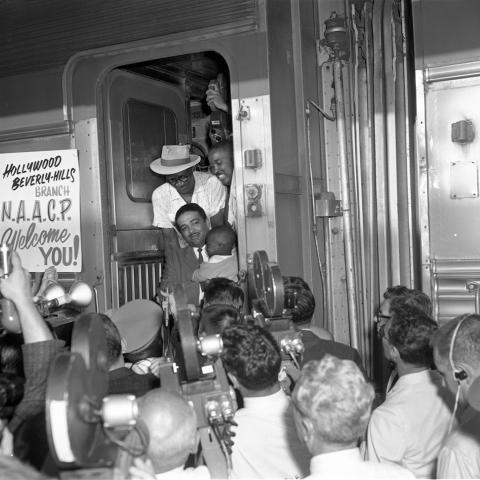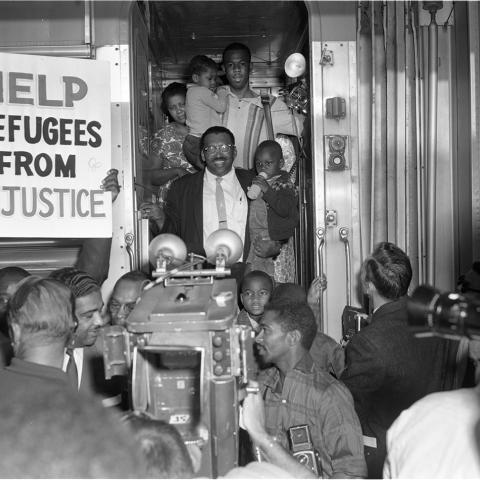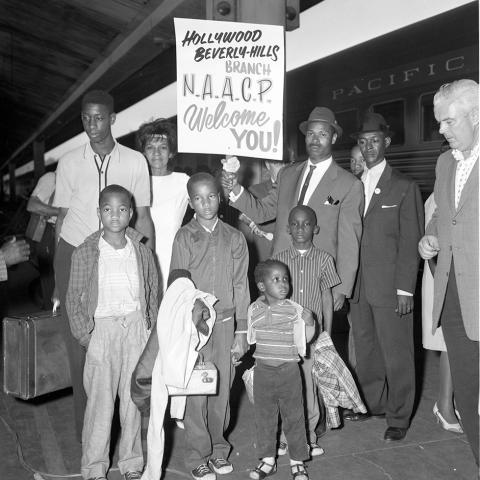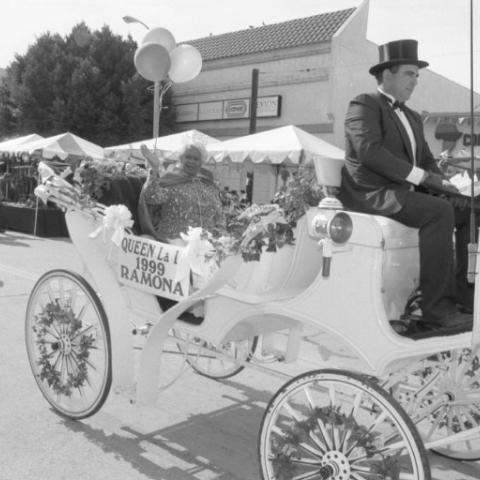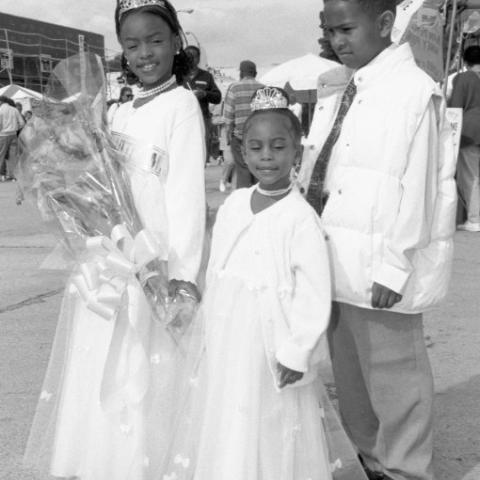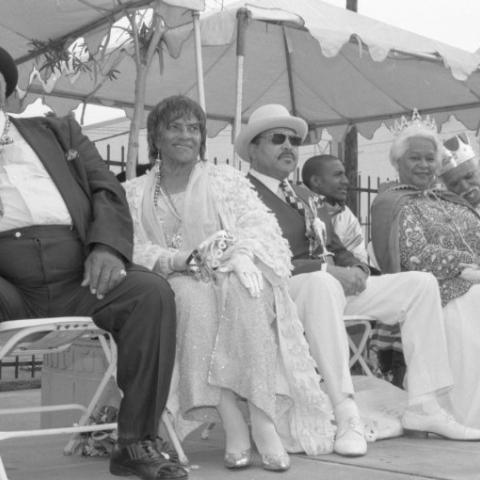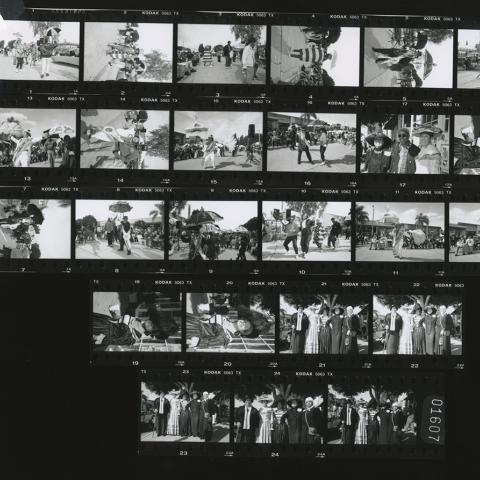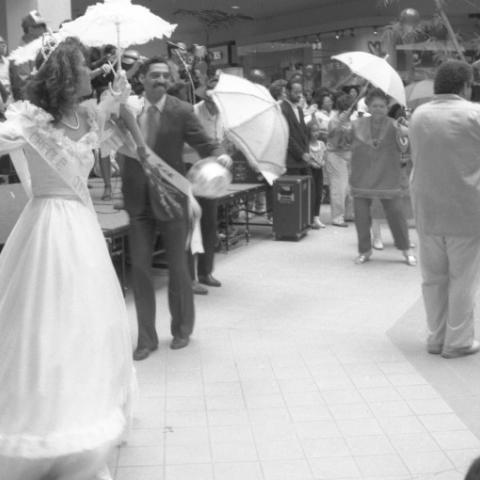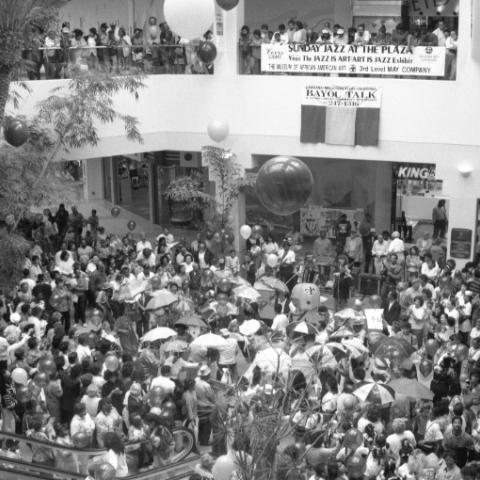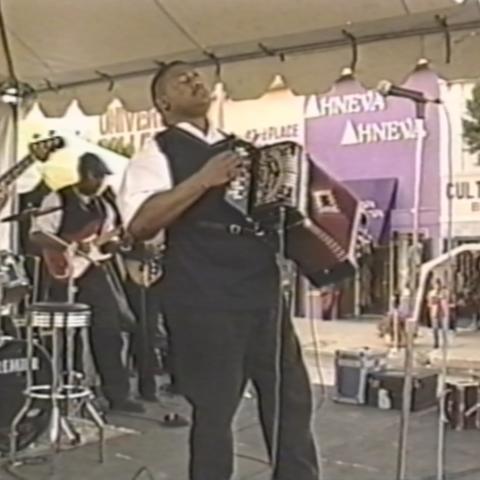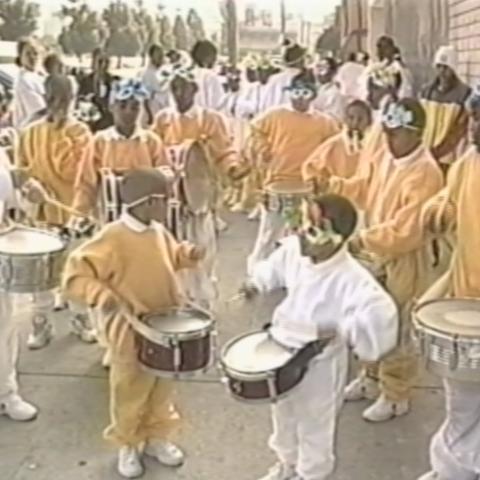From Louisiana to LALA Land: A Black American Migration Story
by Alohie Tadesse, Digital Collections Specialist - November 04, 2025
The Great Migration was the relocation of approximately six million Black Americans from the rural South to industrialized cities across the Midwest, East and West Coasts between the 1910s and the 1970s. Many left the South to escape racial violence, the disenfranchising reverberations Jim Crow legislation, and to seek economic opportunity and social mobility. Historians often divide this movement into two waves. The First Great Migration occurred before World War I, as large numbers of people moved primarily to cities in the East and Midwest. The Second Great Migration began just before World War II and continued throughout the 1970s, expanding westward to include destinations like Los Angeles.
Los Angeles, in particular, drew many newcomers due to its booming defense and industrial sectors, which created jobs in automobile, rubber, and steel production. A significant number of these migrants came from Louisiana and went on to establish vibrant communities that have left a lasting cultural imprint on the city. The story of the Louisiana-to-Los Angeles pipeline is so common that even CSUN’s Vice President for Student Affairs, William Watkins, has shared his own family’s migration story from Louisiana in his published oral history available in the university’s Digital Collections library.
Black photographers and community figures such as Harry Adams, Roland Charles, and Harold Hambrick documented this evolving community through photography and moving images. Their work, now stewarded by the Tom and Ethel Bradley Center, offers a vivid record of all black Americans who found themselves in sunny Los Angeles by the mid-century.
Many Louisianians arrived in Los Angeles through their own initiative or with help from relatives already living in the city. However, photographer Harry Adams also captured a darker chapter of this story: in 1962, over 200 Black Louisianians were sent to Los Angeles by the White Citizens’ Council under false promises of jobs and housing. 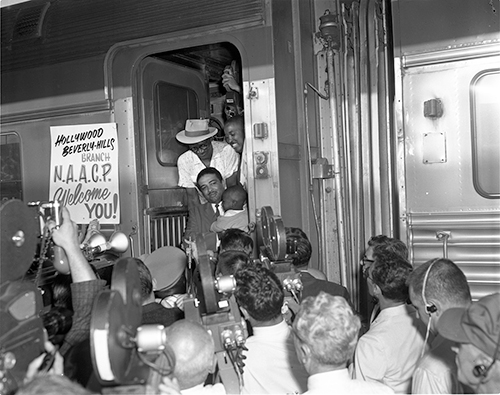 This act, known as the “Reverse Freedom Rides,” was an effort by segregationists to mock the Civil Rights Movement’s Freedom Rides and to embarrass Northern politicians who supported desegregation. Adams’s photographs not only expose this under-discussed episode of white supremacist cruelty but also highlights the local Black community’s sense of collective compassion and mutual aid. Local organizations such as the Urban League, Travelers Aid Society, and the First African Methodist Episcopal Church mobilized to welcome the new arrivals, offering housing and employment assistance while publicly condemning the racist stunt.
This act, known as the “Reverse Freedom Rides,” was an effort by segregationists to mock the Civil Rights Movement’s Freedom Rides and to embarrass Northern politicians who supported desegregation. Adams’s photographs not only expose this under-discussed episode of white supremacist cruelty but also highlights the local Black community’s sense of collective compassion and mutual aid. Local organizations such as the Urban League, Travelers Aid Society, and the First African Methodist Episcopal Church mobilized to welcome the new arrivals, offering housing and employment assistance while publicly condemning the racist stunt.
After the Supreme Court’s 1948 decision in Shelley v. Kraemer, which outlawed racially restrictive housing covenants, many Black Louisianians settled in South Los Angeles, where they became homeowners and established businesses. Jefferson Park saw such an influx of black Creole residents that it was once affectionately called “Little Orleans,” as Creole restaurants and jazz clubs began to line the streets.
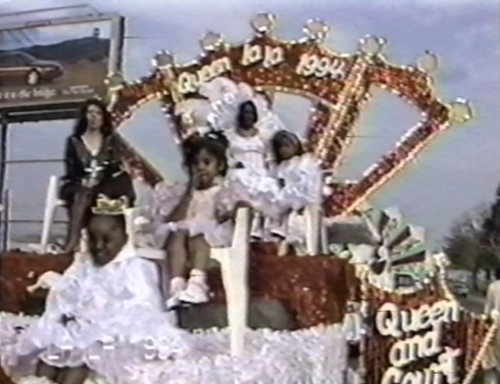 Recognizing this community within a community, Harold Hambrick—a New Orleans–born businessman and community organizer—co-founded the Louisiana to Los Angeles Organizing Committee (LALA) in 1988. Still active, the group seeks both to raise scholarship funds for youth and to preserve Louisiana’s Mardi Gras traditions. What began as a spring fête in Exposition Park evolved into an annual February celebration coinciding with Mardi Gras, now typically held in Leimert Park, another hub of Black culture in South LA. Hambrick recorded many of LALA’s festivals on VHS throughout the 1990s to the early 2000s, recently retransferred and preserved by the Digital Services Lab. These tapes capture the community’s jubilation and cultural pride during a politically contentious but culturally rich period for the neighborhood. They demonstrate how adults in the community passed down New Orleans heritage to the youth, through dress and participation in the festivities, and also by having drill and cheer teams, from nearby schools like Crenshaw High and Audubon Middle School, perform New Orleans band and brass music often played in parades and even funerals. Local photographers Calvin Hicks and Roland Charles also documented these events and others like it that were also held along Crenshaw Blvd and inside the Baldwin Hills Plaza. Together they preserved the Mardi Gras traditions of colorful floats, elaborate krewe costumes, zydeco music, in this community’s new inherited home.
Recognizing this community within a community, Harold Hambrick—a New Orleans–born businessman and community organizer—co-founded the Louisiana to Los Angeles Organizing Committee (LALA) in 1988. Still active, the group seeks both to raise scholarship funds for youth and to preserve Louisiana’s Mardi Gras traditions. What began as a spring fête in Exposition Park evolved into an annual February celebration coinciding with Mardi Gras, now typically held in Leimert Park, another hub of Black culture in South LA. Hambrick recorded many of LALA’s festivals on VHS throughout the 1990s to the early 2000s, recently retransferred and preserved by the Digital Services Lab. These tapes capture the community’s jubilation and cultural pride during a politically contentious but culturally rich period for the neighborhood. They demonstrate how adults in the community passed down New Orleans heritage to the youth, through dress and participation in the festivities, and also by having drill and cheer teams, from nearby schools like Crenshaw High and Audubon Middle School, perform New Orleans band and brass music often played in parades and even funerals. Local photographers Calvin Hicks and Roland Charles also documented these events and others like it that were also held along Crenshaw Blvd and inside the Baldwin Hills Plaza. Together they preserved the Mardi Gras traditions of colorful floats, elaborate krewe costumes, zydeco music, in this community’s new inherited home.
Image Gallery
Post tagged as: bradley center, photographs, los angeles, united states
Read more Peek in the Stacks blog entries